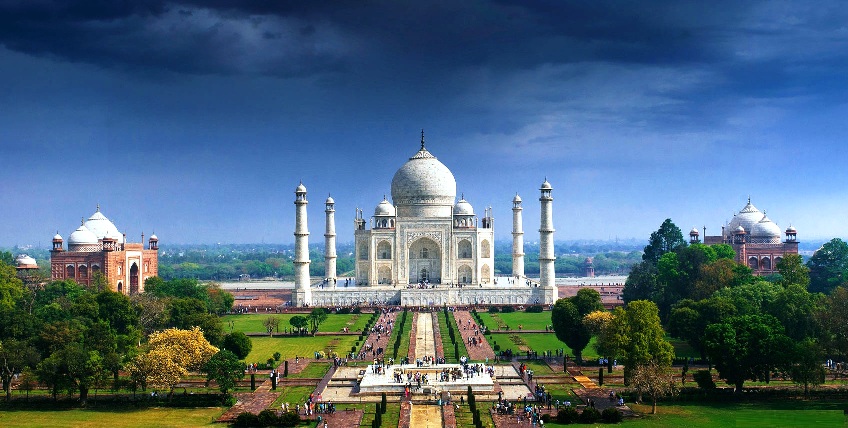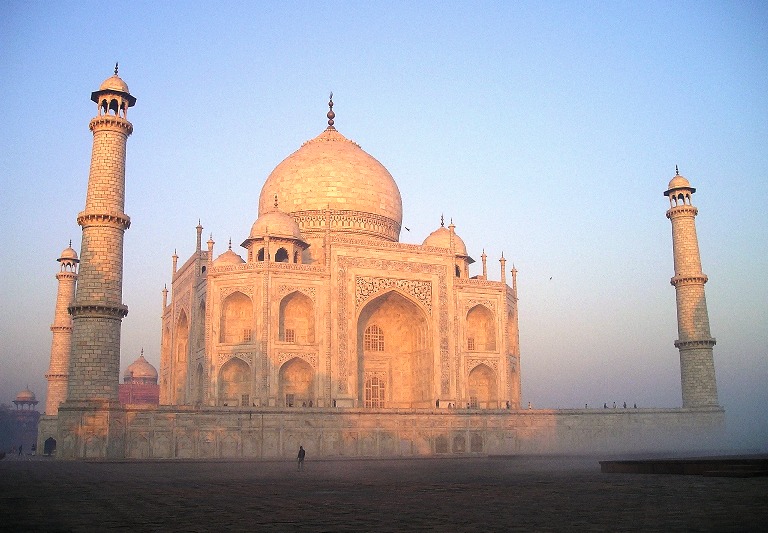The Taj Mahal is a stunning marble mausoleum that needs no introduction. It is one of the Seven Wonders of the World and a UNESCO world heritage site seen by millions of tourists every year. It has been the backdrop of several movies and music videos.
The above reasons make a strong case for visiting this beautiful piece of Mughal architecture that is universally admired.
However, there are some more interesting reasons to tour the Taj Mahal.

The Exquisite Architecture
What makes the Taj Mahal unique
If you have discovered India’s Golden Triangle circuit, you must already be aware that the Taj was constructed by the emperor Shah Jahan in memory of his wife. The construction took 20 years and incurred a total cost of around 53 Billion rupees in modern values. There is an underlying architectural ingenuity behind the Taj complex. No wonder, a poet described it as ‘a teardrop on the cheek of eternity’.
Architectural significance
It is believed that 1000 elephants and hundreds of workers contributed to the construction. Each element used came from a different part of the world. The Makrana marble was transported from Rajasthan, Turquoise from Tibet, and Carnelian from the Middle East.
The architects planned the building complex to look like the Islamic heaven as described in the Quran, signifying that the queen was in ‘Jannat’ (paradise) for her afterlife.
Besides the garden, the complex houses a mosque, a guesthouse, and an archway.
Optical Illusions
There are several optical illusions hiding in plain sight. For instance, when you walk towards the centre from the royal arch, the monument seems to walk away for a while, before finally revealing itself completely. The minarets around the edifice appear to be straight but are actually tilted towards the outside as a precautionary measure. Had they been straight, a possible earthquake could make them fall on the dome and destroy it completely.
The verses of the Quran on the royal gate are not only aesthetically pleasing but are also scientifically made. When viewed from the front, the size of the letters looks the same but if you pay close attention, you would find that the letters at the bottom are the smallest and those on the top are the largest.
Photographer’s paradise
Tips for great photographs
The complex is made in perfect symmetry, whether it’s the gardens, the cenotaph or the archway. Although it is no secret that the tomb looks hauntingly gorgeous from each angle, all the time; there are certain things that bring out the best in the photos of the Taj.

The best details
Although the most clicked view of the Taj is from outside the main gateway, if you want a great shot of the decorations that adorn it, you should use the west-side mosque to take photographs. The nearby Agra Fort offers incredible views of the dome.
Refreshingly new, every hour!
If you love photography, you should check out the Taj at early morning or sunset hours. The Sun paints the Taj in shades of red in the morning. Also, the number of tourists at this time is lesser than usual, allowing you to enjoy solitude and take better portraits. As the sun rises, the dome bathes in hues of gold and pink and looks absolutely breathtaking.
In the night, the moon creates a striking contrast with the complex. For night-photography, the Taj is open to visitors for 5 nights during the full-moon period.
The Taj Mahal forms an integral part of the Golden Triangle Tour, consisting of the cities of Delhi, Jaipur, and Agra. While Agra has other attractions like the Agra Fort and Tomb of Itmad-Ud-Daula, nothing beats the Taj!
Its rich history, unbelievable design, and amazing aura make a compelling case for everyone to visit it at least once in their lifetime!



1 comment